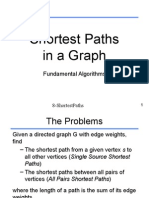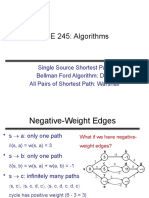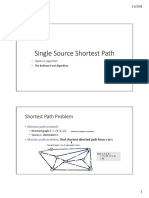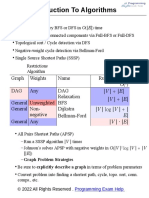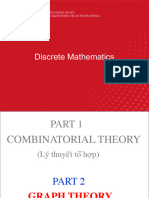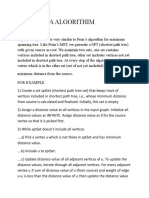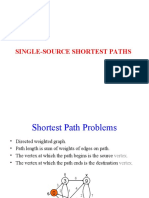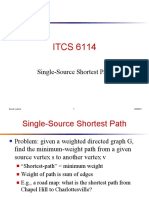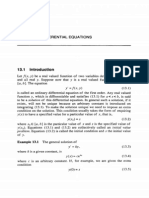0% found this document useful (0 votes)
39 views29 pages09 CS316 - Algorithms - Graph 3 - SSP
The document summarizes shortest path algorithms for graphs, including Dijkstra's algorithm and Bellman-Ford algorithm. Dijkstra's algorithm finds shortest paths from a single source node to all other nodes in a graph with non-negative edge weights. Bellman-Ford can handle graphs with negative edge weights but not negative cycles. Both run in O(VE) time where V is the number of vertices and E is the number of edges.
Uploaded by
EssamCopyright
© © All Rights Reserved
We take content rights seriously. If you suspect this is your content, claim it here.
Available Formats
Download as PPSX, PDF, TXT or read online on Scribd
0% found this document useful (0 votes)
39 views29 pages09 CS316 - Algorithms - Graph 3 - SSP
The document summarizes shortest path algorithms for graphs, including Dijkstra's algorithm and Bellman-Ford algorithm. Dijkstra's algorithm finds shortest paths from a single source node to all other nodes in a graph with non-negative edge weights. Bellman-Ford can handle graphs with negative edge weights but not negative cycles. Both run in O(VE) time where V is the number of vertices and E is the number of edges.
Uploaded by
EssamCopyright
© © All Rights Reserved
We take content rights seriously. If you suspect this is your content, claim it here.
Available Formats
Download as PPSX, PDF, TXT or read online on Scribd
/ 29









